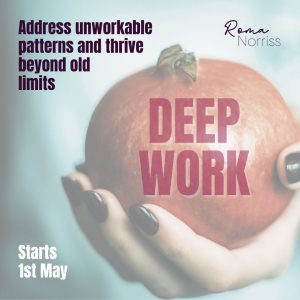Roma Norriss reflects on the basis for an ecstatic birth
I’m all about receiving love when it comes to birth. Receiving love is a bold, rebellious act; as it counters deep-rooted feelings of not receiving enough during birth and infancy. Receiving all the love and support that is there for us, is what allows us to step out of any place that is victimised by the process and choose to be present and powerful instead.
This is not an easy task; it goes against the very grain of our conditioning.
Last week a mother did a beautiful thing. She let me love her so fully that she literally melted into my body as she laboured. She absorbed the support and safety I could offer and said the only thing she was aware of throughout the process was her dear husband and I. Amazingly, she remained oblivious to the chaos and fear emanating from the paramedics and midwives that piled into the bedroom. Despite being commanded many times to lie on her back, her insurgent body somehow neglected to take heed and she persisted, warrior-like, leaning into me or kneeling at times and relishing the tight hold I had on her pelvis. She filtered out all the support she didn’t need and instead spaciously focused on receiving what was safe and nourishing. It was an inspiration to see.
Preparing to receive is a fundamental and unacknowledged part of birth preparation. If we learn to release blocks to letting others in, we can let go and surrender to the process and allow ourselves to be held. Binnie A. Dansby, pioneer of the Ecstatic Birth movement since the 70s, talks about how birth imprints for life…and that the beliefs we took on when we were born are still very much with us. Lifelong beliefs such as, ‘I am alone and separate and I have to do this all by myself’; ‘I must have done something wrong’ or ‘No-one is listening to me’ are typical when we have not been met with welcome and safety. These beliefs, if left unattended, get particularly re-stimulated in pregnancy and during the altered state in labour.
The Ecstatic Birth approach is about turning towards the intensity of the sensations and emotions that arise throughout pregnancy and birth and embracing the massive potential to resolve the impact of our earliest imprint. Pregnancy is the ultimate creative act and nothing that happens during this time is coincidental. If we believe thoughts in labour about being alone and separate, we lay the foundation for victim consciousness and it’s harder to accomplish such a sovereign act from this place.
It’s interesting how receiving love and support can be so challenging. Too frequently women compromise when it comes to what they want in labour. It can be hard to reach for what you truly desire and I hear many women duping themselves that it will somehow be OK. I believe this ultimately stems from very early feelings of not having a choice or there not being enough. This is not a time in your life to be accommodating! It’s vital to embrace these young feelings and remember that you are the one who gets to choose. If you don’t feel comfortable with the idea of having an unknown midwife, or the environment feels less than ideal, it’s time to look at how you can create what you really want. Asking for what you need and recognising your boundaries is a key aspect of receiving love.
When I was in early labour with my daughter, I suddenly became clear that what I actually wanted was to be alone. I had unconsciously been anxious that I might hurt others’ feelings or they wouldn’t have anywhere to go. As soon as I realised I had been prioritising their needs over my own, I said very slowly and deliberately to my husband “I need you to take everyone and go away right now” and within 5 minutes they were all gone. Bingo! I wallowed in the pool and swayed deliciously under the stars and went into proper labour. It wasn’t about renouncing their support; I just needed absolute autonomy and space in that moment. A couple of hours later I let folks come back and love on me and she was born.
Another aspect of receiving love is really acknowledging the depth of your baby’s love for you. Are you lucky enough to remember how much you loved your mother as a baby/young child? It seems a travesty if the moment of this first meeting post birth; an epic transaction during an heightened, oxytocin-fuelled opportunity, is blighted by obsolete, old wounds.
When our early moments were not met with welcome and adoration, the illusion of separation it created can show up in the introduction with our precious one. Sometimes mothers feel overwhelmed by holding their long awaited baby. I remember when I brought my firstborn up to my chest I was completely done in, like a tormented torture victim. I felt as though I would pass out and needed to give the baby to his dad. I am certain this was a remnant of the wound of my own early separation that was materialising in a somewhat less dramatic version than the initial imprint. When I was born I came two months early and was torn away from my mother by medics and detained in isolation for a five-week eternity in an incubator. The moment I brought, with my own hands, my son from my womb to my chest both completed something for me and was paradoxically, entirely excruciating. The level of intimacy and connection on offer somehow did not compute with my cellular expectation of what birth should equate. I also managed to develop a uterine infection, which impeded my connection with my baby for… you guessed it… exactly five weeks!
A recent client created the space so beautifully to welcome her baby girl. It was like time stopped after she was born and her mother and father held her underwater, singing to her. They brought her slowly to the surface and welcomed her so entirely, present with her first gaze upon their faces. They took their time to just be in this perfect moment, encompassed as a unit with their toddler, rose petals afloat, in their miniature and vast amniotic ocean of love. It actually required massive healing to facilitate this, as receiving love was this mother’s Achilles heel and I was deeply moved to witness her transformation.
What does receiving love look like in action?
- What are your beliefs about asking, receiving and deserving? When do you find it hardest to receive love? The answers to those questions will be key in this process. And we can always change our beliefs! A beautiful affirmation from Binnie is ‘I get what I want and everyone benefits’, which is especially apparent during birth. Catching those archetypal negative thoughts in time to make a different choice and using affirmations can turn a pattern like this around.
- Get familiar with your heart’s longings so you can make sure you get what you want. If you are not used to knowing what you really need, try looking up the Non Violent Communication list of feelings and needs and practice labelling them. When discussing and making decisions, pay attention to the sensations in your body. Let them be your compass.
- If you are preparing for birth, choose supporters that can offer love and deep safety… and then let them in. Keep being vulnerable and saying how you really feel; that’s how others connect with your needs. It’s so helpful to keep expressing how you are feeling throughout labour. Say ‘Yes’ and ‘I love you’ frequently, especially when you don’t feel like it.
- When I start feeling cut off from everyone, I phone a friend and ask them to tell me they are right there with me repeatedly. Usually this allows me to cry and release those feelings. In labour, if you feel yourself spiralling into isolation, look into someone’s eyes and get them to breathe with you.
- And when you welcome your baby, let them know that their love is received; they have so much love to give you. Make a plan with your birth entourage about how you want to honour the sacred moments after birth. For ideas on what this can look like, see Binnie’s Ecstatic Birth DVD – binnieadansby.com.
Roma Norriss is an Ecstatic Birth Doula based in Bath. She is mother of two sparkly kiddos and also a NCT Breastfeeding Counsellor and Hand in Hand Parenting Instructor. Roma and Binnie run transformational After Birth workshops, for women who want to move beyond their difficult experiences of giving birth. Find Roma’s blogs on Huffpost and at www.birthingabetterworld.co.uk


